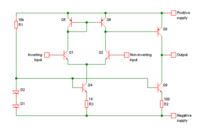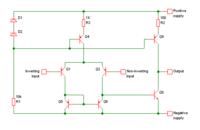danny davis
Banned

- Joined
- Mar 1, 2013
- Messages
- 627
- Helped
- 0
- Reputation
- 0
- Reaction score
- 0
- Trophy points
- 1,296
- Location
- Hollywood
- Activity points
- 0
Thanks for your info.
Yes true, but why would a designer use a PNP transistor if it does the same thing as a NPN?
What have you seen PNP transistors used for
For me I have seen this:
1.) to invert a positive DC voltage INPUT on the base to a negative DC voltage OUTPUT on the collector
2.) to invert a HIGH logic to a Low Logic
I know i have seen PNP transistors in a push pull output stage
But I have seen PNP transistors used a inverters or when used as a Negative logic switch?
PNP transistors can be used for all the same things as NPN transistors - amplifiers, oscillators, constant current sources etc.
PNP transistors work exactly the same as NPN transistors, except the voltages are reversed.
Yes true, but why would a designer use a PNP transistor if it does the same thing as a NPN?
What have you seen PNP transistors used for
For me I have seen this:
1.) to invert a positive DC voltage INPUT on the base to a negative DC voltage OUTPUT on the collector
2.) to invert a HIGH logic to a Low Logic
I know i have seen PNP transistors in a push pull output stage
But I have seen PNP transistors used a inverters or when used as a Negative logic switch?









